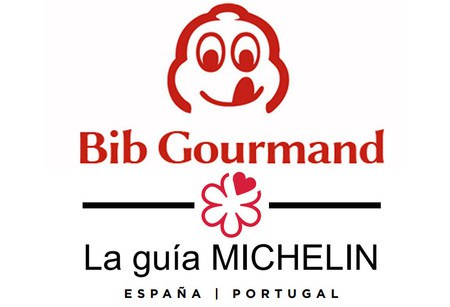Designations of origin in Spain
When we ask ourselves about the importance of a Denomination of Origin when talking about a wine, many times we do not consider what it means both in its elaboration and in its quality.
However, this means that it has its own characteristics and that this quality is differentiating, since it has been produced in a specific area and with specific raw materials, to which is added the method of elaboration and the human factor.
In summary, the best wines in Spain are so because:
-
Being made with grapes from the region or place of the Denomination of Origin.
-
To go through a control system from production to subsequent marketing with the aim of guaranteeing quality and quantity.
-
Enjoy prestige for its origin in the market and be sold bottled.
Likewise, to know how to distinguish each appellation of origin, we can look at the labels of the wine and find out which of all the D.O. it is, but first we will discover how many there are in Spain.
The best designations of origin of Spain
Rioja
The Control Board was constituted in 1953, but it was in 1991 that it obtained the status of Qualified D.O., the first in Spain to do so.
The geographical features have contributed to form a natural region perfectly delimited and differentiated from those that surround it. It extends along the course of the upper Ebro: La Rioja, Alava and Navarra.
The existence of three sub-zones is officially recognized: Rioja Alta (calcareous-clay, ferrous-clay and alluvial soils), Rioja Baja (ferrous-clay and alluvial soils) and Rioja Alavesa (calcareous-clay).
Penedès
Founded in 1960, it currently has more than 5,700 registered winegrowers, 270 wineries and 148 companies dedicated to aging and exporting.
In total, this translates into nearly two million hectoliters of wine produced annually. It extends between the Catalan pre-coastal mountain range and the small plains of the Mediterranean coast, subdivided into three zones: the Upper Penedès, the Central Penedès and the Lower Penedès.
Due to the influence of the sea and the sun, it is an area with a warm and mild climate. The soil is very varied, with deep soils, not very sandy, not quite clayey, permeable and water retentive. It is also poor in organic matter, calcareous and not very fertile.
Ribera del Duero
One of the most prestigious D.O. in Spain.
Located in the great northern plateau of the Iberian Peninsula, the Duero River is its axis along 115 km long and 35 km wide, at the confluence of four provinces: Burgos, Segovia, Soria and Valladolid.
The climatology is continental, with an average annual rainfall of 450 mm, temperatures ranging from 40ºC to -18ºC.
The soil is made up of a large ancient plinth, partly covered by Tertiary sediments formed by silty or clayey sands, with alternating layers of limestone, marl, and even calcareous layers. The altitude between the interfluvial hills, with heights of 911 meters, and the valleys, is located between 750 and 850 meters.
Navarra
Founded in 1933, in the last two decades it has been totally transformed, introducing foreign varieties and the entry on the scene of a group of restless winemakers willing to turn the situation around.
It is an exceptional situation, as the Atlantic, continental and Mediterranean climates converge.
The D.O. can be divided into 5 different production areas: Baja Montaña, Valdizarbe, Tierra Estella, Ribera Alta and Ribera Baja. These five winegrowing areas are differentiated from each other by geographical location, orography, cultivated varieties, soils, and climate.
Valdepeñas
It is located on the southern edge of the southern Castilian sub-plateau, and can be considered framed in the regions of Campo de Montiel, to the east, and Campo de Calatrava, to the west.
It was recognized as a D.O. in 1932, with subsequent regulations in 1968, 1976 and 1994.
Furthermore, it is considered the second best known D.O. in Spain, with an average altitude of 705 meters, dry continental climate, more than 2500 hours of sunshine, average annual temperature of 16ºC and rainfall between 200 and 400 liters per year are the main characteristics.
Rueda
Founded in 1980, it was the first C.O. recognized in Castilla y León.
Specialized in white wines, its largest concentration of vineyards is located in the municipalities of La Seca, Rueda and Serrada.
By latitude, Rueda is located in the Mediterranean area, but by altitude, it has a continental influence. Located between 700 and 800 meters, flat but high lands, with cold and very long winters, short springs and hot and dry summers, it forces the vines to seek their water resources in the depths of the subsoil.
With great contrasts between day and night temperatures, with more than 2,600 hours of sunshine and stony soils.
Rías Baixas
Created in 1988, it covers a group of areas in Galicia with common physical conditions. It is divided into five subzones: Val do Salnés, O Rosal, Condado do Tea, Soutomaior and Ribera de Ulla.
They are lowlands, generally at an altitude of less than 300 meters, close to the sea and associated with lower stretches of river, which formally conditions the climatic characteristics of Atlantic influence.
La Mancha
Founded in 1999, it covers the entire autonomous community of Castilla-La Mancha.
The aim of the initiative is to facilitate its identification to consumers who demand wines different from appellation of origin and table wines.
The approval of the Vinos de la Tierra de Castilla indication has provided the wine sector with an instrument to maximize the possibilities for winemakers to market wines produced in Castilla-La Mancha.
Ribeiro
Created as a D.O. in 1957, it is currently experiencing a renaissance based on wines made from red and white grapes. Located in southern Galicia, on the northwestern edge of Ourense.
With an altitude that varies between 75 and 400 meters, sometimes the slopes are saved by planting on terraces called socalcos or bocaribeiras, which follow the contours of the level.
Thanks to the natural barriers, it has an ecoclimate of oceanic-mediterranean transition, humid and temperate temperatures, average rainfall of 950 mm. The soils have an average depth between 70 and 100 cm. of granitic origin.









